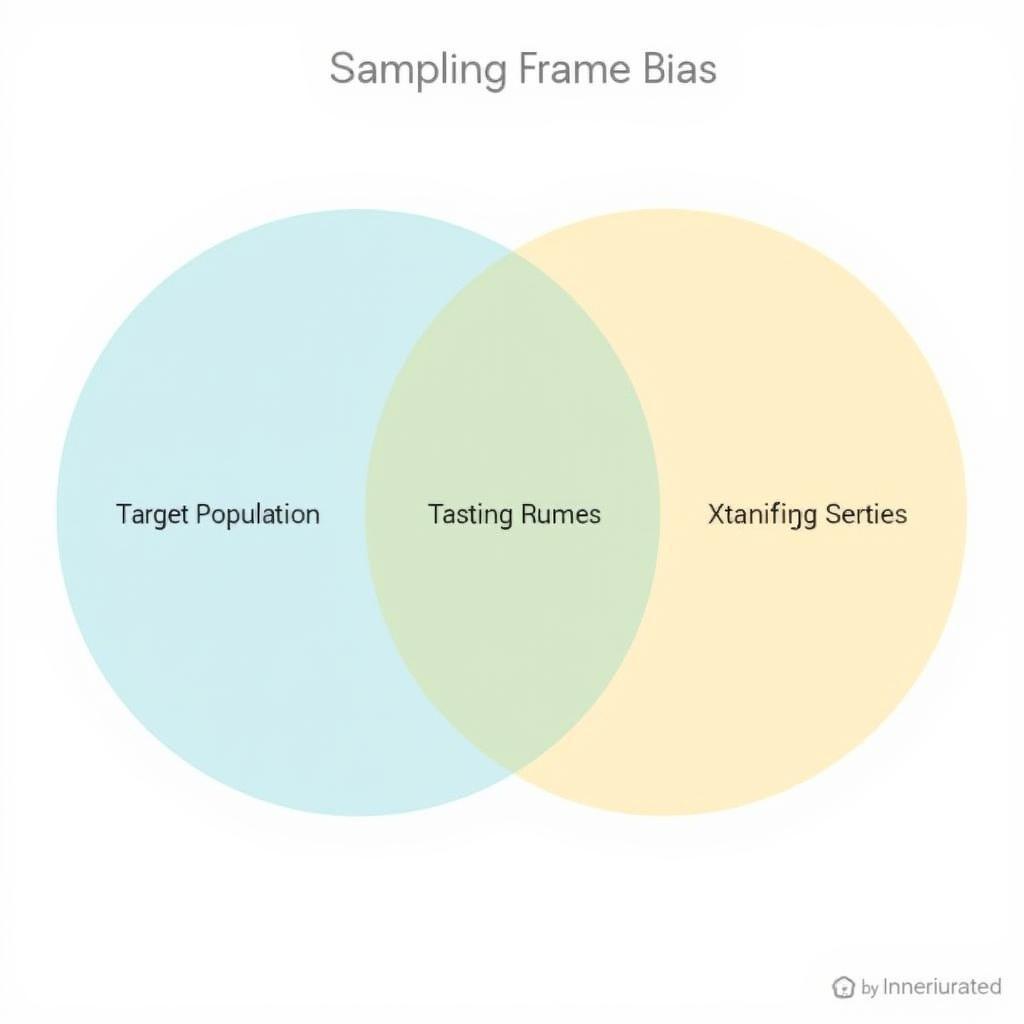Imagine yourself stepping into a library filled with countless books, each holding a piece of a larger puzzle you’re trying to solve. How do you choose which books to read to get the most complete picture of the puzzle? This is similar to the challenge researchers face when they select a sample group for their studies. That’s where the “sampling frame” comes into play, acting as a researcher’s guide through the vast sea of data.
A Sampling Frame In Research is essentially a list of all the members within a population that a researcher can potentially include in their study. It’s the foundation upon which researchers build their sample, ensuring that their findings accurately reflect the characteristics of the larger population they aim to understand.
Delving Deeper into the World of Sampling Frames
Think of the sampling frame as a master list, a detailed inventory of every single unit that could be included in your study. This could be a list of individuals, households, organizations, or even documents – depending on the scope and nature of your research. The more comprehensive and accurate your sampling frame, the more representative your sample will be, and the more reliable your research findings.
Why is a Sampling Frame so Crucial?
The importance of a well-defined sampling frame cannot be overstated. It directly impacts the validity and generalizability of your research findings. A biased or incomplete sampling frame can skew your results, leading to inaccurate conclusions and misinterpretations.
 Sampling Frame Bias
Sampling Frame Bias
Let’s imagine you’re researching the effectiveness of a new diabetes treatment. Your target population is all individuals diagnosed with diabetes in a particular city. If your sampling frame only includes patients visiting a specific clinic, you’re missing out on a significant portion of the diabetic population who might seek treatment elsewhere or manage their condition independently. This could lead to a biased sample and inaccurate conclusions about the treatment’s overall effectiveness.
Navigating the Challenges of Creating a Sampling Frame
While a sampling frame is fundamental to sound research, creating one isn’t always straightforward. Researchers often encounter challenges such as:
- Identifying the Target Population: Defining the specific characteristics of the population you want to study can be more complex than it seems. It requires careful consideration and clear parameters.
- Incomplete or Inaccurate Lists: Finding existing lists that perfectly align with your target population can be challenging. These lists may be outdated, incomplete, or contain inaccuracies.
- Difficult-to-Reach Populations: Certain groups, like individuals experiencing homelessness or undocumented immigrants, can be challenging to include in a sampling frame due to their transient nature or fear of disclosure.
Different Strokes for Different Folks: Types of Sampling Frames
Just like there are various research questions, there are different types of sampling frames tailored to specific research needs:
- List Frames: This is the most common type, using a pre-existing list like a phone directory, voter registration list, or customer database.
- Map Frames: Useful for geographically defined populations, these frames use maps to divide the area into smaller units for sampling.
- Time Frames: These frames involve selecting units based on time intervals, such as observing customer behavior every hour at a retail store.
 Types of Sampling Frames
Types of Sampling Frames
Choosing the Right Sampling Frame for Your Research
The type of sampling frame you choose will depend on various factors, including:
- Research Question: The specific question you’re trying to answer will guide the type of sampling frame that’s most appropriate.
- Available Resources: Time, budget, and access to information will influence the feasibility of different sampling frame options.
- Target Population: The characteristics and accessibility of your target population will play a significant role in your choice.
From Sampling Frame to Insightful Findings
The journey from a well-defined sampling frame to robust research findings involves several crucial steps:
- Define your target population meticulously.
- Identify the most suitable sampling frame type.
- Obtain a comprehensive and accurate list or framework.
- Select your sample using an appropriate sampling method.
- Analyze your data and draw conclusions.
By carefully considering each stage of this process, researchers can minimize sampling bias and enhance the accuracy and reliability of their findings.
Frequently Asked Questions about Sampling Frames
What is the difference between a sampling frame and a sample?
While both are integral parts of the research process, they are distinct concepts. The sampling frame is the complete list of potential participants, while the sample is the smaller group selected from that list to participate in the study.
Can I conduct research without a sampling frame?
While it’s technically possible to conduct research without a formal sampling frame, it significantly increases the risk of bias and limits the generalizability of your findings. A sampling frame provides a structured and systematic approach to selecting your sample, ensuring its representativeness.
Need Help with Your Research?
Navigating the intricacies of research methodology can be daunting, but you don’t have to do it alone. If you’re grappling with defining your sampling frame or any other aspect of your research, our team of experts is here to help.
Contact us today!
Phone: 0904826292
Email: research@gmail.com
Address: No. 31, Alley 142/7, P. Phú Viên, Bồ Đề, Long Biên, Hà Nội, Việt Nam
We offer 24/7 customer support and are dedicated to helping you unlock the answers you seek.